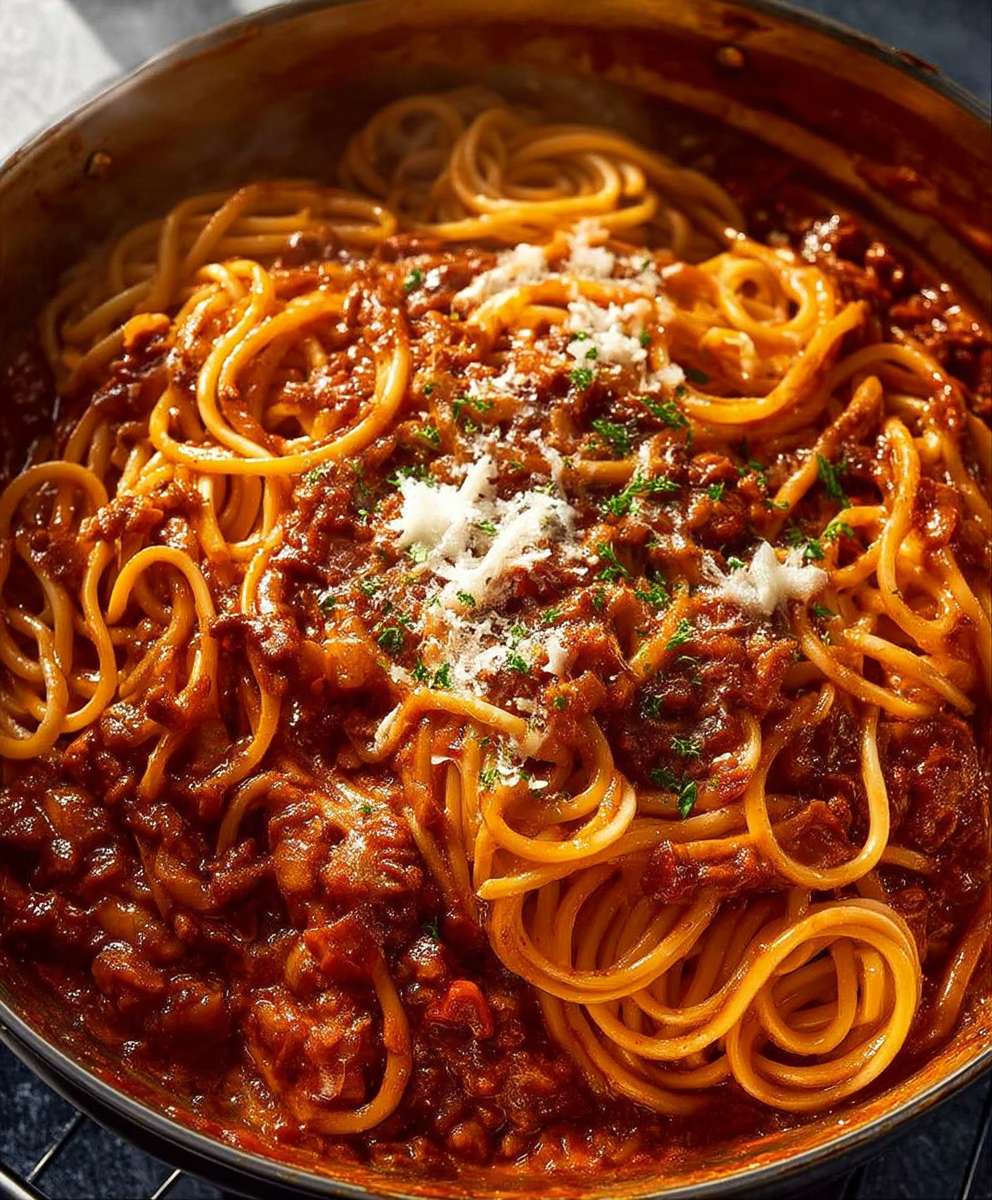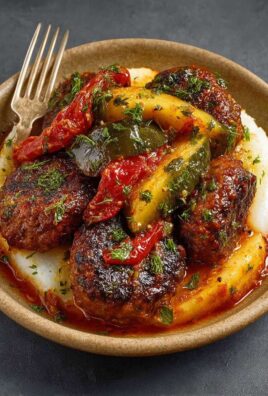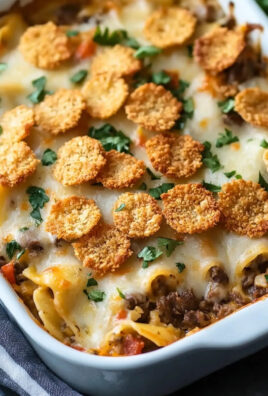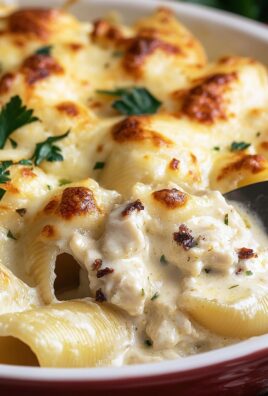Pasta Bolognese, a culinary masterpiece hailing from the heart of Italy, is more than just a dish; it’s an experience. Imagine twirling strands of perfectly cooked pasta, each coated in a rich, savory sauce simmered to perfection. Are you ready to embark on a flavorful journey that will transport you straight to Bologna?
The history of Bolognese sauce, or “ragù alla bolognese” as it’s known in Italy, dates back to the 15th century. Originally a meat stew served as a main course, it gradually evolved into the luscious pasta sauce we know and love today. While variations exist, the core ingredients remain consistent: ground meat (typically beef, pork, or veal), vegetables like onions, carrots, and celery, and a touch of tomato.
What makes Pasta Bolognese so universally adored? It’s the symphony of flavors, the comforting texture, and the sheer versatility of the dish. The slow-cooked sauce allows the ingredients to meld together, creating a depth of flavor that’s simply irresistible. Whether you’re a seasoned chef or a beginner in the kitchen, this recipe is surprisingly easy to master, making it a perfect weeknight meal or a show-stopping dish for a special occasion. Join me as we unlock the secrets to creating the ultimate Pasta Bolognese, a dish that will undoubtedly become a family favorite!
Ingredients:
- For the Bolognese Sauce:
- 1 tablespoon olive oil
- 1 large onion, finely chopped
- 2 carrots, finely chopped
- 2 celery stalks, finely chopped
- 500g (1.1 lbs) ground beef (or a mix of beef and pork)
- 200g (7 oz) pancetta or bacon, diced (optional, but highly recommended!)
- 2 cloves garlic, minced
- 1 teaspoon dried oregano
- 1/2 teaspoon dried thyme
- 1/4 teaspoon red pepper flakes (optional)
- 1/2 cup dry red wine (like Chianti or Merlot)
- 800g (28 oz) canned crushed tomatoes
- 2 tablespoons tomato paste
- 1 cup beef broth (or chicken broth)
- 1/2 cup whole milk (or cream)
- 1 bay leaf
- Salt and freshly ground black pepper to taste
- 2 tablespoons chopped fresh parsley, for garnish
- For the Pasta:
- 500g (1.1 lbs) pasta (traditionally tagliatelle, but spaghetti, fettuccine, or rigatoni work well too)
- Salt for pasta water
- Grated Parmesan cheese, for serving
Preparing the Bolognese Sauce:
- Sauté the Vegetables: Heat the olive oil in a large, heavy-bottomed pot or Dutch oven over medium heat. Add the chopped onion, carrots, and celery (this is called a soffritto, the foundation of many Italian sauces). Cook, stirring occasionally, until the vegetables are softened and slightly translucent, about 8-10 minutes. Don’t rush this step; allowing the vegetables to soften properly is key to developing a rich flavor.
- Brown the Meat: Add the ground beef (and pancetta, if using) to the pot. Break up the meat with a spoon and cook, stirring frequently, until it’s browned all over. Drain off any excess grease. Browning the meat is crucial for developing a deep, savory flavor. Make sure you get a good sear on the meat; this adds a lot of depth to the sauce.
- Add Aromatics: Stir in the minced garlic, dried oregano, dried thyme, and red pepper flakes (if using). Cook for another minute, until fragrant. Be careful not to burn the garlic, as it can become bitter.
- Deglaze with Wine: Pour in the red wine and scrape up any browned bits from the bottom of the pot. Let the wine simmer for a few minutes, allowing the alcohol to evaporate. This step adds a wonderful depth of flavor to the sauce.
- Add Tomatoes and Broth: Stir in the crushed tomatoes, tomato paste, beef broth, and bay leaf. Season with salt and pepper to taste. Bring the sauce to a simmer.
- Simmer the Sauce: Reduce the heat to low, cover the pot, and simmer for at least 2-3 hours, or even longer for a richer flavor. Stir occasionally to prevent sticking. The longer the sauce simmers, the more the flavors will meld together and the more tender the meat will become. I often let mine simmer for 4 hours or more! If the sauce becomes too thick, add a little more beef broth.
- Finish the Sauce: Stir in the milk (or cream) and simmer for another 15-20 minutes. This adds richness and creaminess to the sauce. Remove the bay leaf before serving. Taste and adjust the seasoning as needed. You might need a little more salt or pepper.
Cooking the Pasta:
- Cook the Pasta: While the sauce is simmering, cook the pasta according to package directions. Be sure to salt the pasta water generously; this is your only chance to season the pasta itself. I usually add about a tablespoon of salt per gallon of water.
- Reserve Pasta Water: Before draining the pasta, reserve about 1 cup of the pasta water. This starchy water can be used to thin the sauce and help it cling to the pasta.
- Drain the Pasta: Drain the pasta well.
Assembling and Serving:
- Combine Pasta and Sauce: Add the drained pasta to the pot with the Bolognese sauce. Toss to coat the pasta evenly. If the sauce is too thick, add a little of the reserved pasta water until it reaches your desired consistency.
- Serve: Serve immediately, garnished with chopped fresh parsley and grated Parmesan cheese. A side of crusty bread is also a great addition for soaking up any extra sauce.
Tips for the Best Bolognese:
- Use Quality Ingredients: The better the quality of your ingredients, the better your Bolognese will be. Use good quality ground beef, canned tomatoes, and Parmesan cheese.
- Don’t Rush the Simmering Process: The longer the sauce simmers, the more flavorful it will become. Aim for at least 2-3 hours, or even longer if you have the time.
- Adjust the Seasoning: Taste the sauce frequently and adjust the seasoning as needed. You may need to add more salt, pepper, or other spices to suit your taste.
- Add a Touch of Cream: Adding a little cream or milk at the end of cooking adds richness and creaminess to the sauce.
- Serve with the Right Pasta: Traditionally, Bolognese sauce is served with tagliatelle, a wide, flat pasta. However, other types of pasta, such as spaghetti, fettuccine, or rigatoni, also work well.
- Make it Ahead: Bolognese sauce is even better the next day, as the flavors have had time to meld together. You can make the sauce ahead of time and store it in the refrigerator for up to 3 days, or in the freezer for up to 2 months.
- Spice it up: For a spicier sauce, add more red pepper flakes or a pinch of cayenne pepper.
- Add Vegetables: Feel free to add other vegetables to the sauce, such as mushrooms, zucchini, or bell peppers.
- Use Different Meats: Experiment with different combinations of meats, such as ground pork, veal, or lamb.
- Don’t Forget the Parmesan: A generous grating of Parmesan cheese is the perfect finishing touch to this classic dish.
Variations:
- Vegetarian Bolognese: Substitute the ground beef with lentils, mushrooms, or a vegetarian ground meat substitute.
- Turkey Bolognese: Use ground turkey instead of ground beef for a leaner version.
- Seafood Bolognese: Use shrimp, scallops, or other seafood instead of ground beef.
- Spicy Bolognese: Add more red pepper flakes or a pinch of cayenne pepper for a spicier sauce.
Storing Leftovers:
- Refrigerating: Store leftover Bolognese sauce in an airtight container in the refrigerator for up to 3 days.
- Freezing: Freeze leftover Bolognese sauce in an airtight container for up to 2 months. Thaw overnight in the refrigerator before reheating.
Reheating:
- Stovetop: Reheat Bolognese sauce in a saucepan over medium heat, stirring occasionally, until heated through.
- Microwave: Reheat Bolognese sauce in a microwave-safe dish in the microwave, stirring occasionally, until heated through.
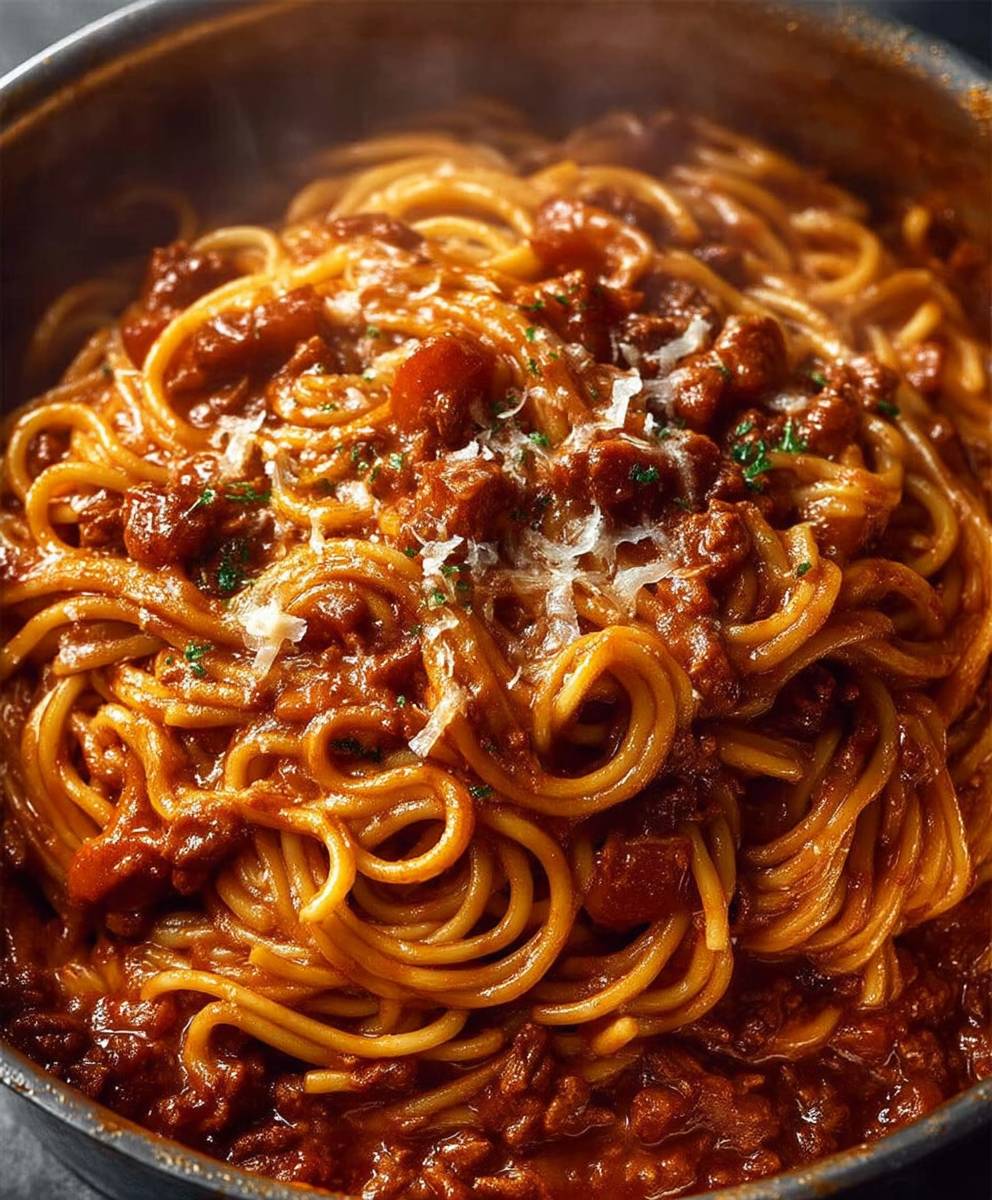
Conclusion:
This isn’t just another pasta recipe; it’s an invitation to experience the rich, comforting flavors of authentic Italian cuisine right in your own kitchen. From the slow-simmered sauce, bursting with savory goodness, to the perfectly cooked pasta, every element of this Pasta Bolognese recipe is designed to delight your taste buds and leave you craving more. I truly believe this is a must-try for anyone who appreciates a hearty, satisfying meal.
What makes this Bolognese so special? It’s the depth of flavor achieved through patience and quality ingredients. The long simmering time allows the flavors to meld together beautifully, creating a sauce that’s far superior to anything you can find in a jar. The combination of ground beef and pork adds complexity, while the vegetables provide a subtle sweetness that balances the richness of the meat. And let’s not forget the touch of milk, which tenderizes the meat and adds a creamy smoothness to the sauce.
But the best part? This recipe is incredibly versatile! While I personally love serving it over classic spaghetti, feel free to experiment with different pasta shapes. Tagliatelle, pappardelle, or even rigatoni would all be fantastic choices. For a vegetarian twist, you could substitute the meat with lentils or mushrooms. Just be sure to adjust the cooking time accordingly.
Looking for serving suggestions? A simple green salad with a light vinaigrette is the perfect accompaniment to this hearty dish. A sprinkle of freshly grated Parmesan cheese and a drizzle of good quality olive oil will elevate the flavors even further. And don’t forget the crusty bread for soaking up every last drop of that delicious sauce!
If you’re feeling adventurous, try adding a pinch of red pepper flakes to the sauce for a little bit of heat. Or, for a richer flavor, incorporate a splash of red wine during the simmering process. You can also customize the vegetables to your liking. Carrots, celery, and onions are the traditional base, but you could also add mushrooms, bell peppers, or even zucchini.
This Pasta Bolognese is also a fantastic make-ahead meal. The sauce can be prepared a day or two in advance and stored in the refrigerator. In fact, I often find that the flavors develop even more overnight. Simply reheat the sauce and cook the pasta just before serving. It’s perfect for busy weeknights or for entertaining guests.
I’ve poured my heart and soul into perfecting this recipe, and I’m confident that you’ll love it as much as I do. It’s a dish that’s sure to impress your family and friends, and it’s guaranteed to become a staple in your recipe repertoire.
So, what are you waiting for? Gather your ingredients, put on some Italian music, and get ready to embark on a culinary adventure. I promise you won’t be disappointed.
And most importantly, I want to hear about your experience! Did you make any modifications to the recipe? What pasta shape did you use? What did your family think? Share your photos and stories in the comments below. I can’t wait to see your creations and hear your feedback. Happy cooking! I hope you enjoy this Pasta Bolognese as much as I do!
Pasta Bolognese: The Ultimate Guide to Authentic Italian Recipe
A rich and flavorful Bolognese sauce, simmered for hours to perfection, served over your favorite pasta and topped with Parmesan cheese. A classic Italian comfort food!
Ingredients
- 1 tablespoon olive oil
- 1 large onion, finely chopped
- 2 carrots, finely chopped
- 2 celery stalks, finely chopped
- 1.1 lbs ground beef (or a mix of beef and pork)
- 7 oz pancetta or bacon, diced (optional)
- 2 cloves garlic, minced
- 1 teaspoon dried oregano
- 1/2 teaspoon dried thyme
- 1/4 teaspoon red pepper flakes (optional)
- 1/2 cup dry red wine (like Chianti or Merlot)
- 28 oz canned crushed tomatoes
- 2 tablespoons tomato paste
- 1 cup beef broth (or chicken broth)
- 1/2 cup whole milk (or cream)
- 1 bay leaf
- Salt and freshly ground black pepper to taste
- 2 tablespoons chopped fresh parsley, for garnish
- 1.1 lbs pasta (traditionally tagliatelle, but spaghetti, fettuccine, or rigatoni work well too)
- Salt for pasta water
- Grated Parmesan cheese, for serving
Instructions
- Sauté the Vegetables: Heat the olive oil in a large, heavy-bottomed pot or Dutch oven over medium heat. Add the chopped onion, carrots, and celery. Cook, stirring occasionally, until the vegetables are softened and slightly translucent, about 8-10 minutes.
- Brown the Meat: Add the ground beef (and pancetta, if using) to the pot. Break up the meat with a spoon and cook, stirring frequently, until it’s browned all over. Drain off any excess grease.
- Add Aromatics: Stir in the minced garlic, dried oregano, dried thyme, and red pepper flakes (if using). Cook for another minute, until fragrant.
- Deglaze with Wine: Pour in the red wine and scrape up any browned bits from the bottom of the pot. Let the wine simmer for a few minutes, allowing the alcohol to evaporate.
- Add Tomatoes and Broth: Stir in the crushed tomatoes, tomato paste, beef broth, and bay leaf. Season with salt and pepper to taste. Bring the sauce to a simmer.
- Simmer the Sauce: Reduce the heat to low, cover the pot, and simmer for at least 2-3 hours, or even longer for a richer flavor. Stir occasionally to prevent sticking. If the sauce becomes too thick, add a little more beef broth.
- Finish the Sauce: Stir in the milk (or cream) and simmer for another 15-20 minutes. Remove the bay leaf before serving. Taste and adjust the seasoning as needed.
- Cook the Pasta: While the sauce is simmering, cook the pasta according to package directions. Be sure to salt the pasta water generously.
- Reserve Pasta Water: Before draining the pasta, reserve about 1 cup of the pasta water.
- Drain the Pasta: Drain the pasta well.
- Combine Pasta and Sauce: Add the drained pasta to the pot with the Bolognese sauce. Toss to coat the pasta evenly. If the sauce is too thick, add a little of the reserved pasta water until it reaches your desired consistency.
- Serve: Serve immediately, garnished with chopped fresh parsley and grated Parmesan cheese.
Notes
- Use quality ingredients for the best flavor.
- Don’t rush the simmering process; the longer the sauce simmers, the more flavorful it will become.
- Adjust the seasoning to your taste.
- Adding a touch of cream or milk at the end adds richness.
- Traditionally served with tagliatelle, but other pasta shapes work well.
- Bolognese sauce is even better the next day.
- For a spicier sauce, add more red pepper flakes.
- Feel free to add other vegetables to the sauce.
- Experiment with different combinations of meats.
- A generous grating of Parmesan cheese is the perfect finishing touch.

